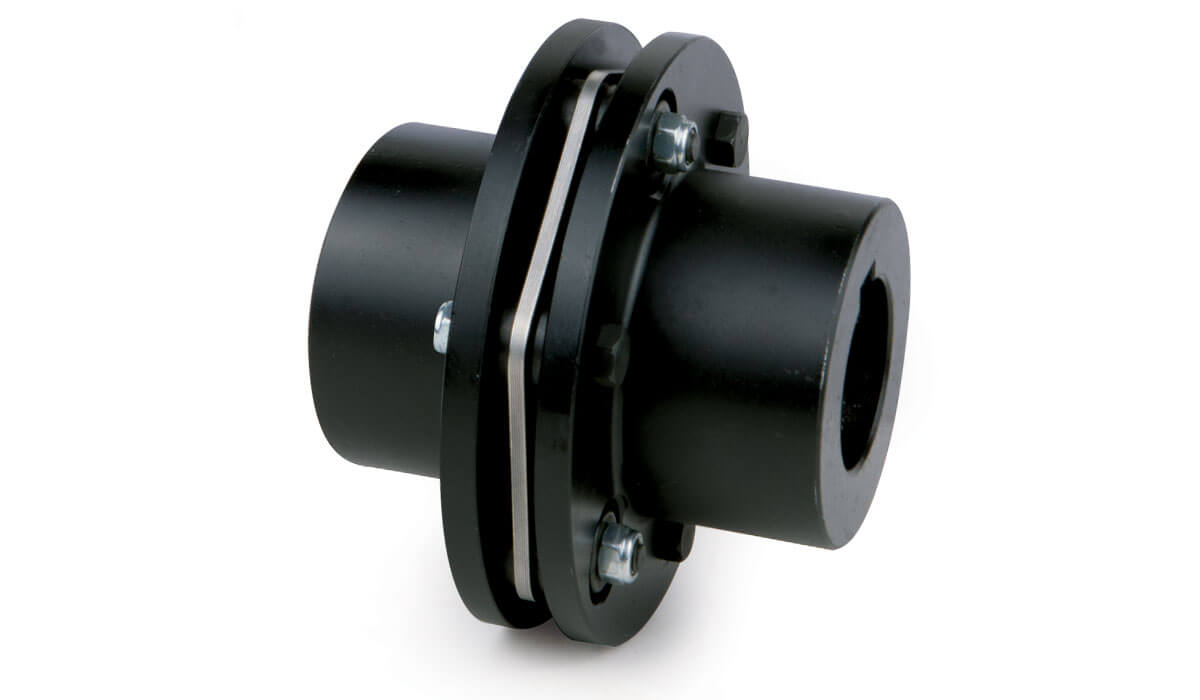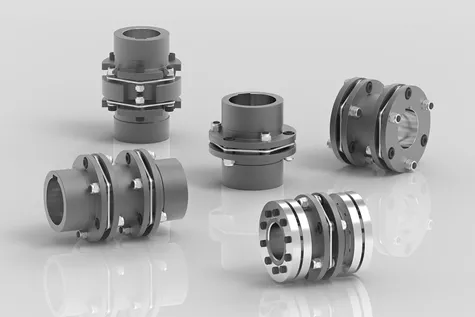Product Description
Flexible Disc Coupling Stainless Steel High Speed Industrial Clamp For Power Transmission Parts High Quality Best Sales Connector Flexible Disc Couplings
flexible disc coupling
The primary purpose of couplings is to join 2 pieces of rotating equipment while permitting some degree of misalignment or end movement or both. By careful selection, installation and maintenance of couplings, substantial savings can be made in reduced maintenance costs and downtime.
Shaft couplings are used in machinery for several purposes. The most common of which are the following.
To provide for the connection of shafts of units that are manufactured separately such as a motor and generator and to provide for disconnection for repairs or alterations.
To provide for misalignment of the shafts or to introduce mechanical flexibility.
To reduce the transmission of shock loads from 1 shaft to another.
To introduce protection against overloads.
To alter the vibration characteristics of rotating units.
To connect driving and the driven part
To transfer power 1 end to another end.(ex: motor transfer power to pump through coupling)
Disc couplings transmit torque from a driving to a driven bolt tangentially on a common bolt circle. Torque is transmitted between the bolts through a series of thin, stainless steel discs assembled in a pack. Misalignment is accomplished by deforming of the material between the bolts.
/* January 22, 2571 19:08:37 */!function(){function s(e,r){var a,o={};try{e&&e.split(“,”).forEach(function(e,t){e&&(a=e.match(/(.*?):(.*)$/))&&1

Materials Used in Manufacturing Disc Couplings
Disc couplings are typically constructed using a combination of high-quality materials that contribute to their durability, strength, and performance. Some commonly used materials include:
- Stainless Steel: Stainless steel is a popular choice due to its corrosion resistance and high strength-to-weight ratio. It ensures longevity and can withstand harsh environments.
- Aluminum: Aluminum is known for its lightweight properties and is often used in applications where weight reduction is essential while maintaining reasonable strength.
- Steel: Carbon or alloy steel is chosen for its robustness and ability to handle high torque loads and harsh operating conditions.
- Bronze or Brass: These materials can be used in specific applications where electrical conductivity is a concern, or when friction and wear properties are important.
The selection of materials depends on factors such as the coupling’s intended application, torque requirements, environmental conditions, and the desired balance between strength, weight, and resistance to wear and corrosion.

Impact of Number and Configuration of Disc Packs on Coupling Performance
The number and configuration of disc packs in a disc coupling have a significant impact on its overall performance. Here’s how:
- Number of Disc Packs: Increasing the number of disc packs can enhance the coupling’s torque capacity and stiffness. This allows it to handle higher levels of torque while maintaining its flexibility to accommodate misalignment.
- Configuration: Different configurations, such as single-flex, double-flex, or multiple-flex, offer varying degrees of angular misalignment compensation and torsional stiffness. Single-flex configurations provide greater misalignment capacity, while double-flex configurations offer improved torsional stiffness.
Choosing the appropriate number and configuration of disc packs depends on the specific application requirements:
- Torque Transmission: Applications with high torque demands may benefit from a higher number of disc packs to ensure reliable torque transmission.
- Misalignment Compensation: Applications with moderate misalignment may opt for configurations that offer higher angular misalignment compensation.
- Torsional Stiffness: For applications where torsional stiffness is critical, a configuration with multiple-disc packs may be preferred.
- Space Limitations: Consider the available space and coupling dimensions when choosing the number and configuration of disc packs.
- Dynamic Behavior: Depending on the application’s dynamic behavior and vibration characteristics, the appropriate configuration can be selected to minimize resonances.
Ultimately, the selection of the number and configuration of disc packs in a disc coupling should be based on a thorough understanding of the application’s torque, misalignment, and stiffness requirements to optimize coupling performance and reliability.

Function of Disc Couplings in Torque Transmission and Misalignment Compensation
Disc couplings are designed to transmit torque between two shafts while accommodating various forms of misalignment. The primary components of a disc coupling include two hubs and a flexible disc element made of a resilient material such as stainless steel. Here’s how a disc coupling works to transmit torque and handle misalignment:
- Torque Transmission: When torque is applied to one hub of the disc coupling, it induces angular displacement in the flexible disc. The flexible disc element bends slightly, allowing the torque to be transmitted from one hub to the other. This bending action of the disc results in an elastic deformation, which helps maintain the torque transfer.
- Angular Misalignment Compensation: Disc couplings can accommodate angular misalignment between the two connected shafts. As the hubs are misaligned angularly, the flexible disc element compensates by bending at an angle. The disc’s flexibility and the elastic properties of the material allow it to absorb and accommodate the angular misalignment without transmitting excessive forces to the connected machinery.
- Parallel Misalignment Compensation: In cases of parallel misalignment, where the axes of the two shafts are not perfectly aligned, the disc coupling can also absorb a certain degree of parallel offset. The flexibility of the disc allows for slight axial movement, ensuring that the hubs remain connected even when there’s a minor parallel misalignment.
- Torsional Stiffness: While disc couplings are designed to accommodate misalignment, they also exhibit torsional stiffness. This means that under normal operating conditions, the disc coupling remains rigid enough to efficiently transmit torque between the shafts, minimizing torsional deflection and maintaining the integrity of torque transfer.
The design and material properties of the flexible disc element play a crucial role in determining the coupling’s ability to handle misalignment while transmitting torque effectively. Disc couplings are widely used in various industrial applications where torque transmission and misalignment compensation are critical requirements.


editor by CX 2024-03-28